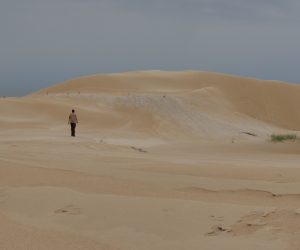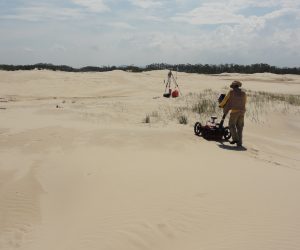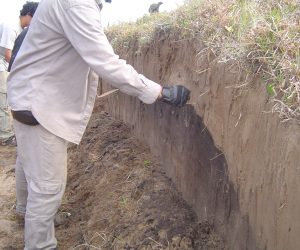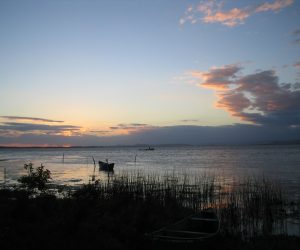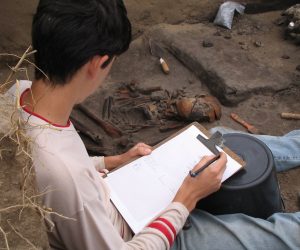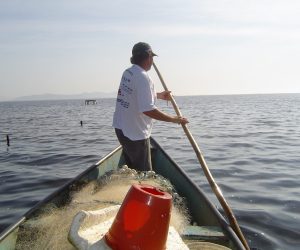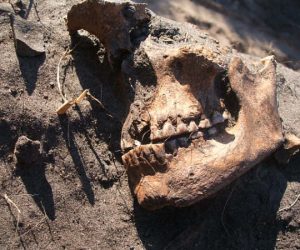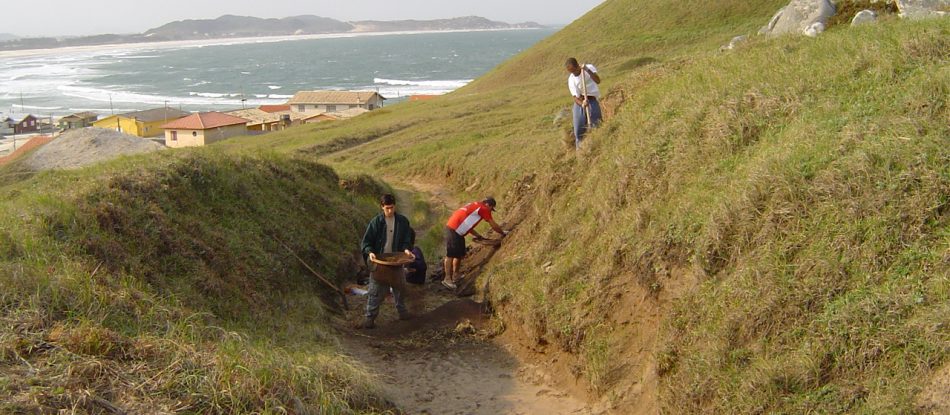
Coastal
ECOLOGY
The thin strip of coastal vegetation that borders the Atlantic Ocean is called Restinga – a scrubland/woodland vegetation dominated by cacti, bromeliads, palms, and other drought-tolerant taxa adapted to the nutrient-poor, sandy soils of the coastal dunes. Sophora tormentosa, Vitex megica, and Polygala are particularly abundant on young dunes, while Gomideia palustris, Eugenia Catharinae and Myrcia multiflora, and Bromeliaceae dominate in thickets and woodland upon older stabilised dunes.
ARCHAEOLOGY
Prior to the arrival of Je culture in the coastal regions of the study zone, the archaeology of the region is dominated by the evidence of the sambaquis, mounded structures made mainly of shells, These mounds were built by means of recurrent and incremental deposition of food remains and other cultural debris, associated with a very ritualistic programming of mortuary practices and periodical return to these sacred places, implying long-lived connection to perceived ancestors, both real and mythological, although little conclusive evidence of associated habitation sites. Chronology for the sambaqui culture goes as back in time as around 8 kyBP, intensifying around 5 and 2 kyBP approximately, with dozens of sites concomitantly active, and some of these mounds have been used for more than two thousand years, thus acquiring gigantic proportions of up to 60m high.
Around two thousand years ago the shell mounds gave place to “dark-earth” material; smaller heaps made of massive food remains, principally fish, enmeshed in darken sandy packages rich in organic matter and charcoal. Besides the distinctive faunal profile, these sites are also marked by the presence of Taquara/Itararé ceramics, typical of the Je occupations at the hinterland plateaus and escarpments of Southern Brazil, where these ceramic styles are associated to pit-houses and earthen engineering. Depositional sequences on the coast seem to display a long connection and mutual influences between sambaqui and Je cultures, interrupted around six hundred years ago by the abrupt arrival of the fierce Guarani people, followed by the arrival of the first European settlers.
Publications
Cardoso, J. M.; May Júnior, J. A.; Farias, D. S.; DeBlasis, P. 2014. Zooarqueologia do sítio Galheta IV: um enfoque nos vestígios do Pinguim-de-Magalhães (Spheniscus magellanicus, Spheniscidae). In Zocche, Jairo José, Juliano Bitencourt Campos, Nelson José Oliveira de Almeida & Cláudio Ricken (eds.) Arqueofauna e Paisagem, p. 155-170. Erechim, Editora Habilis. ISBN 978-85-60967-61-2.
DeBlasis, P.; Farias, D. S. & Kneip, A. 2014. Velhas tradições e gente nova no pedaço: perspectivas longevas de arquitetura funerária na paisagem do litoral sul catarinense. Revista do Museu de Arqueologia e Etnologia 24: 109-136. São Paulo, MAE-USP.
Kneip, A.; DeBlasis, P.; Farias, D. S.; Mello, A. A. S. 2014. Reconhecimento de estruturas internas em um sítio através da análise estatística de um padrão espacial de pontos: o caso do sítio Galheta IV, Laguna/SC. In Campos, Juliano Bitencourt, Jairo José Zocche, Jedson Francisco Cerezer & Luiz Miguel Oosterbeek (orgs.) Arqueologia Ibero-americana e Transatlântica: arqueologia, sociedade e território, p. 89-106. Erechim, Editora Habilis. ISBN 978-85-60967-60-5.
DeBlasis, P.; Kneip, A.; Scheel-Ybert R.; Giannini P.C.; Gaspar, M. D. 2007. Sambaquis e paisagem: Dinâmica natural e arqueologia regional no litoral do sul do Brasil. Arqueología Suramericana / Arqueologia Sul-Americana 3, (1): 29-61, 2007.

